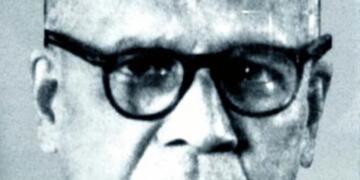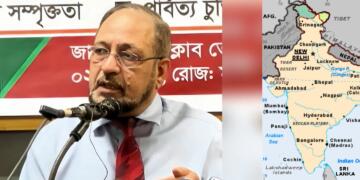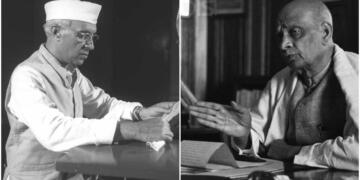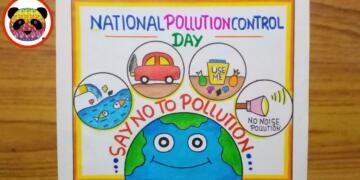An article in Times of India today lists 15 ways to beat pollution in Delhi. Interestingly, point 15 on that list is ‘Move out of Delhi if you can’. Given the dismal state of affairs in the national capital, this seems like the best option to pursue. Sadly, it is also the most unrealistic. Delhi, which was crowned as the world’s most polluted city in 2015, is rapidly becoming one of the most unlivable as well. With traffic woes that seem to worsen by the day, pollution that becomes dreadful by the minute and general lack of infrastructure and amenities, Delhi is on its way to becoming world’s unhappiest city as well.
Sadly, our national discourse seems completely oblivious to the problems faced by the denizens of the national capital. Instead of a concrete plan to de-congest and clean up the city, our politicians are busy, well, politicking. November 2016 has brought with itself some of the worst smog experienced in the city. PM 2.5 levels which should hover around 60, were as high as 876 in RK Puram area, while PM 10 levels, standardized at 100, were above 1500 in Punjabi Bagh. No wonder that many have claimed that living in the national capital is like living in a Gas chamber. Exposure to such levels of pollution over a prolonged period will inevitably cause serious life threatening diseases. The situation is even direr for the elderly and infants.
Fashionably, the spike in pollution levels post Diwali is being blamed on the excessive bursting of crackers. While bursting cracker, undoubtedly causes pollution, it is a bit farfetched to blame the national capital’s pollution levels on Firecrackers only.
To burst a bubble in that argument, Lahore, which is not exactly known for its Diwali celebration, too is reeling under a heavy blanket of smog in the last few days. Winter months are the worst for pollution in North India.
Cool air in the winter months makes the air stagnant and traps particulate matter close to the ground. As dry, cold winds move in from Afghanistan and Pakistan, the air becomes rife with pollutants resulting from extensive straw burning in Punjab and other agricultural regions and literally converts Delhi into a gas chamber. Particulate pollution is of primary concern in Delhi as it consistently stays above national standards. Particulate pollution is responsible for increased instances of respiratory and cardiovascular diseases. That having been said, it is not ‘Nature’ alone that is responsible for Delhi’s pollution.
As per an IIT-Kanpur study, Road dust is responsible for most of particulate pollution in Delhi. 56% of PM 10 and 38% of PM 2.5 results from road dust. In spite of being the major reason for pollution, surprisingly little or no effort is being made to vaccuum roads, or pave sidewalks or plant more trees on dividers. Similarly, road sloping as a science seems to be in neolithic stage in India. Water is allowed to stagnate on roads, creating potholes, which dissolve asphalt, leaving behind fine dust when the water evaporates. Municipal sweepers merely spread the dust accumulated on the roads with their brooms and disperse it in the air, thereby compounding the problem. Introduction of vacuum machines should have already happened, but one wonders where all the dust collected by vacuum machines will be deposited. An associated point with road dust is the prevalence of construction activities, which also add to particulate matter levels in the air. Reasonable restrictions will need to be put on construction activities to tackle this problem. However, as with any solution, a comprehensive thought process and planning is needed, something which our politicians and civic agencies sorely lack.
Vehicles are the second leading cause of PM 2.5 pollution and the 4th most important cause of PM 10 pollution. Arvind Kejriwal’s much touted Odd-Even scheme, which good in theory failed in practice to deliver any substantial positive results (One factor being that two-wheelers were excluded from its scope). One key reason for the abject failure of the scheme was that the government was more interested in tom-tomming about its administrative prowess than putting in place long term sustainable solutions. Delhi’s vehicular traffic increased by a stupendous 97% between 2002-2012. Loans are freely disbursed by banks to enable lakhs of Delhi’s citizens to procure vehicles, irrespective of the need. At the same time, Delhi’s public transport, specifically bus network has crashed and the metro system has been unable to replace it in terms of connectivity. This has resulted in lakhs of cars and two wheelers, flooding the streets of the capital. Diesel vehicles, that pollute more but are more affordable have made a bad situation worse. Poor road infrastructure, lack of public transport and burgeoning numbers of private vehicles has made the national capital a prisoner of a vicious circle. This vicious circle contributes to increasing pollution, worsens quality of human life and aids in Delhi rapidly becoming an unliveable city. The need of the hour is to put restrictions on purchase of vehicles (both two and four wheelers) in the city and gradually make owning vehicles unaffordable in the national capital. At the same time, public transport needs to be re-invigorated and Delhiites should be encouraged to commute in public transport.
Industrial effluents are the third major cause of pollution in the national capital. Industrial complexes should, at the earliest be moved outside the national capital. That in itself, won’t solve the problem,but would free up space in Delhi that can be used to plant trees and increase the city’s green cover. The need of the hour is to enforce strict rules on usage of environment-friendly fuels in industries. Industries should be designed using the ‘Green methodology’ so that their energy requirements can also be reduced. At the same time, effective monitoring of industries should be done to ensure that rules are not flouted. The government should also reserve the right to shut down industries for an extended period to control pollution levels in the national capital.
As was stated earlier, the problem of pollution in Delhi is not confined merely to Delhi. It impacts states bordering Delhi as much as it affects the national capital. Any effective measures to be taken will necessitate the cooperation of multiple state governments. Therefore, this is not solely a Kejriwal or a Modi issue. The problem of pollution in Delhi should be delinked from cheap politics that is rife in our country. For the sake of Delhi’s citizens who are choking on toxic air, our politicians will need to set aside their petty differences and work in unison to give breathable air to Delhi’s people. It is the least that one can expect in such a situation.
References:
http://www.dailyo.in/politics/deli-air-follution-road-dust-winter-kejriwal-dpcc/story/1/13798.html
http://www.livemint.com/Politics/ksCJ2v0xXWkfilb5kWCzQP/What-causes-Dlhis-follution.html
https://dehiair.org/india-and-dehi/what-causes-follution-in-dlhi/
































